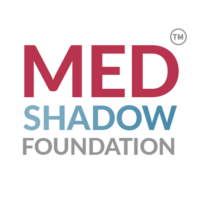Since the early 1900s, the federal government has attempted to regulate narcotics and other drugs with a potential for abuse or dependence (whether for medical or recreational use), by employing a hodgepodge of tariffs, import and export laws, and criminal prosecution. (The 19th century saw little to no effective regulation of dangerous drugs in the U.S.)
In 1970, Congress passed the Controlled Substances Act (CSA), granting the Bureau of Narcotics and Dangerous Drugs (BNDD) — precursor of the Drug Enforcement Administration (DEA), which was established in 1973 — and the Department of Health and Human Services (HHS) the authority to classify drugs based on their medical benefits and potential for misuse or addiction. The goal was to streamline the regulation of drugs that can cause substance use disorders.
Within the CSA are five controlled substance schedules that are used to classify drugs based on their accepted medical applications and abuse potential, each with its own set of regulations, which the DEA is responsible for enforcing.
Because these medications are considered controlled substances, they’re subject to stricter oversight than standard prescriptions. Manufacturers, prescribers, and pharmacies must all register with the DEA, creating a “closed system” that allows authorities to monitor who is producing, prescribing, and dispensing each controlled substance — and in what quantity. Additionally, entities storing the medications, such as pharmacies, must keep them in secure places and report any theft or lost drugs to the DEA.
But many experts argue that these classifications don’t always reflect a drug’s true risk of addiction, and can create more obstacles than benefits for healthcare providers and the public at large.
“The intent is to say, ‘Let’s weigh the risks versus the benefits or the potential harms versus the potential benefits,’” says Jared Ross, D.O., founder and president of Emergency Medical Services, Education & Consulting LLC. However, he argues that the current drug scheduling system is inconsistent and places unnecessary logistical and administrative burdens on both healthcare providers and researchers.
Benjamin Zelinsky, a psychotherapist and addiction counselor at Soul Wellness in New York, says that at the very least, the scheduling needs to be revised. “It can give people an understanding of the risks for certain substances but, as we’ve seen, it’s not really an effective tool.”
For example, certain Schedule II drugs may be just as or more likely to cause harm than some Schedule I drugs, but because they have an accepted medical use, they’re rated as having a lower risk, which could confuse some patients. Additionally, a person’s risk of developing a substance use disorder is highly individualized — influenced by such factors as genetics, dosage, and how long they take a particular drug, making a one-size-fits-all scheduling system inherently limited.
“It’s important for people to know that it’s not a full picture,” says Zelinsky.
Dr. Ross and Zelinsky are not alone. According to a 2024 survey, many healthcare providers believe the regulations can make it more difficult to provide patients with optimal medical care.
Here is a list of the different drug classifications and what they mean.
Schedule I
These drugs are known to have a high risk of abuse and addiction, along with no accepted medicinal use. For that reason, healthcare providers cannot prescribe them to patients.
Examples of Schedule I drugs include:
- Heroin
- Lysergic acid diethylamide (LSD)
- Methylenedioxymethamphetamine (MDMA)
- Marijuana
The current classification of marijuana and MDMA is widely debated today, as many experts now believe these substances have legitimate medical uses. But their Schedule I status makes them challenging to access for research.
“Our largest contradiction is clearly marijuana,” says Dr. Ross. Despite near universal acceptance of medical marijuana, adult recreational use of marijuana being legal in 24 states plus D.C., and a recommendation from HHS in August 2023 to reschedule marijuana to a less-restrictive Schedule III drug, federal legalization is slow to follow.
Schedule II
Drugs classified as Schedule II, which include some opioids, are also known to have a high risk of misuse and potential for addiction. In fact, the opioid fentanyl is the number one drug-related killer among Americans aged 18 to 45, whereas no deaths have been attributed to marijuana. The difference in classification is that several Schedule II drugs are used to effectively relieve pain and other symptoms. Yet the risk of addiction is especially high when opioids are used to manage chronic pain over a long period of time. Healthcare providers can prescribe these drugs, but pharmacies aren’t allowed to refill prescriptions. Each time you need more, you’ll need a new prescription from your provider.
Examples of Schedule II drugs include:
- Fentanyl
- Morphine
- Codeine
- Amphetamine
- Oxycodone
Schedule III
Schedule III drugs are thought to have moderate potential for addiction and misuse. Your pharmacy is permitted to refill up to five prescriptions in a six month period. After that, your healthcare provider will need to write a new prescription.
Examples of Schedule III drugs include:
- Anabolic steroids
- Ketamine
- Vicodin
- Tylenol with codeine (not more than 90 milligrams of codeine per dosage unit)
- Buprenorphine
Schedule IV
Schedule IV drugs are thought to have mild potential for addiction and misuse. As with Schedule III drugs, your pharmacy can refill up to five prescriptions in six months, then you’ll need to see your healthcare provider if you require more.
Examples of Schedule IV drugs include:
- Tramadol
- Alprazolam (Xanax)
- Carisoprodol
- Clonazepam (Klonopin)
- Diazepam (valium)
- Lorazepam (Ativan)
Schedule V
Schedule V drugs are the least likely of the controlled substances to be misused because they result in very limited psychological or physical dependence. These drugs can be refilled by your pharmacy as needed, and in some cases, may be available over-the-counter (OTC) without a prescription.
Examples of Schedule V drugs include:
- Pregabalin (Lyrica)
- Ezogabine
- Antidiarrheal medications that contain atropine/diphenoxylate
- Cough medicines with codeine (not more than 200 milligrams of codeine per 100 milliliters)
Why is Marijuana a Schedule I Drug?
Since the creation of the Controlled Substances Act in 1970, marijuana has been classified as a Schedule I drug due to its lack of recognized medical use. This makes it something of a catch-22 because that same classification has made it difficult for scientists to study its potential medical benefits. In 2023, HHS recommended that marijuana be rescheduled to Schedule III. The move aimed to acknowledge that the drug has potential medicinal value and that it is the least likely to cause addiction of the other Schedule I drugs, such as heroin. About a year later, in May 2024, the Department of Justice made a formal proposal to reschedule the drug. Hearings on the proposal were held in early 2025, but as of April 28, 2025, the DEA has not yet moved to reschedule the drug.Yet, while the change has not happened at the federal level, nearly half the states have legalized the drug for medical or recreational purposes.
You can find an alphabetical list of controlled substances with their schedule here.






